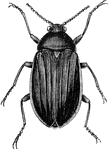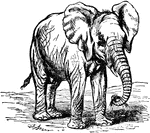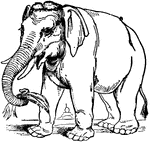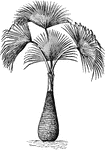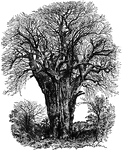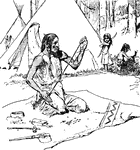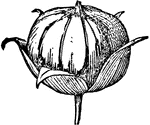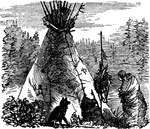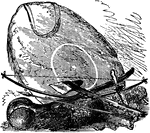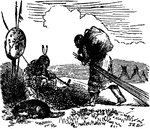
Shamrock
"The national emblem of Ireland, is a plant with a leaf formed from three leaflets. It is thought to…

Sugar Cane
Tall grasses native to the warm temperate and tropical climates. They contain stout fibrous stalks with…

Fig Plant
The fruit of Ficus carica, which is native to Asia. The genus is an enormous one in the tropics. There…

Spider
"Bird-catching Spider, a name originally given to a large spider, Mygale avicularia, a native of Cayenne…

Lentil
"An annual plant of the same genus with tares, a native of countries near the Mediterranean, and which…
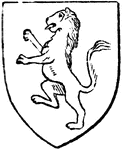
Rampant Lion
"The lion holds an important place among the animals born in coat-armor. As early as the 12th century,…
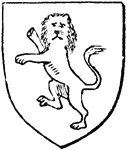
Gardant Lion
"The lion holds an important place among the animals born in coat-armor. As early as the 12th century,…
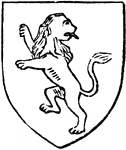
Rampant Regardant Lion
"The lion holds an important place among the animals born in coat-armor. As early as the 12th century,…
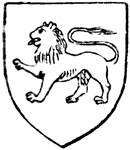
Passant Lion
"The lion holds an important place among the animals born in coat-armor. As early as the 12th century,…
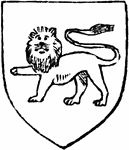
Lion
"The lion holds an important place among the animals born in coat-armor. As early as the 12th century,…

Lion
"The lion holds an important place among the animals born in coat-armor. As early as the 12th century,…
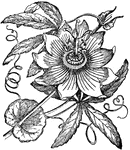
Passionflower
"A genus of plants almost exclusively native to the warm parts of America, and belonging to the natural…
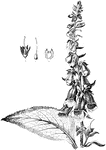
Purple Foxglove
A biennial herb native to Europe. Its leaves and flowers are poisonous to humans and some animals.
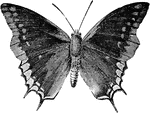
Mourning Cloak
A butterfly native to Eurasia and North America. It has wings that are dark red with a yellow border.

Porgy
A fish native to the Mediterranean and Alantic waters. Usually silver in color and rosy on its back.

Hosiery
"In the year 1589 the stocking-frame, the machine which mechanically produces the looped stitch in hosiery,…

Arracacha
"A plant of the natural order Umbelliefrae, a native of the elevated table-lands in the neighborhood…
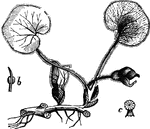
Asarabacca
"A plant of the natural order Aristolochiaceae, a native of Europe, growing in woods; rare, and perhaps…
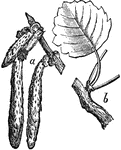
Aspen
"A tree which grows plentifully in Europe and in Siberia. It is a native of Britain, and is frequent…

Balm
"An erect, branching perennial, herbaceous plant of the natural order Labiatae, a native of the south…
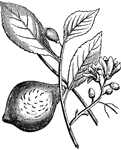
Citron
"A tree cultivated in the south of Europe, and other warm, temperate, or sub-tropical countries for…
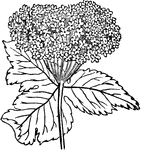
Cow Parsnip
"A genus of plants of the natural order Umbelliferae, having petals bent in at the middle, and flat…

Cowslip
"A common native of pastures in England and many other parts of Europe, although rare in Scotland, a…

Crowberry
"A small procumbent shrub, of the natural order Empetraceae, a native of the northern parts of the world,…

Custard Apple
"The name commonly given in the West Indies and other tropical countries to the fruits of certain species…

Date Palm
"A genus of palms, the most important species of which is the common Date Palm, the Palm Tree of Scripture,…
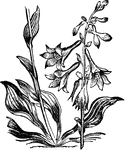
Day-lily
"A genus of plants of the natural order Liliaceae, having a perianth with bell-shaped limb, and sub-cylindrical…

Dielytra
"A genus of plants of the natural order Fumariaceae, in appearance and habit much resembling fumitories…
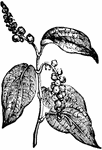
Black Pepper
"A genus of order Piperaceae. The Piper nigrum, which furnishes the black pepper of commerse, is a native…

Ipecacuanha Plant
"The root used in medicine under this name is obtained from Cephaelis Ipecacuanha, A. Rich, a small…
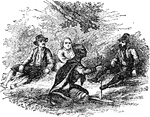
Native American Teachers
"Indian explaining the method of kindling a fire by the friction of two pieces of wood." —Wells,…

Rudd
A fish with a red eye. Sometimes refered to as a pest in parts of the world because of its impact on…
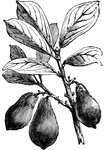
Avocado
A tree native to Central America and Mexico. Ranges from 1 to 2 pounds in weights and is mostly purple…

Avocet
A wader bird native to warm and hot climates. Commonly 15 to 18 inches tall and has a chestnut color…

Aye-Aye
A lemurine quadruped native to Madagascar. Has an elongated middle finger used to dig grub out of trees.
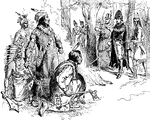
Harrison's Council with Tecumseh
William Henry Harrison's council with Tecumseh, at Vincennes in 1810. William Harrison was the governor…

William Henry Harrison
Harrison preparing for battle on November 7th, 1811 with the Native Americans
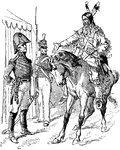
Horseshoe Bend
William Weatherford, "Red Eagle," surrenders to Andrew Jackson at the end of the Creek Indian War of…

Trillium
Trillium is a genus of about 40-50 species of perennial herbaceous flowering plants, native to temperate…
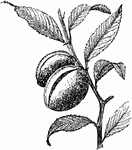
Almond
A tree with pinkish blossoms whose fruit is very fiborous. It is native to Asia and Africa but is grown…

Picture Writing
An example of Native American picture writing. One interpretation: "The chiefs Black Wolf, Raven, Fast…



